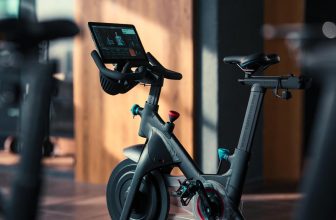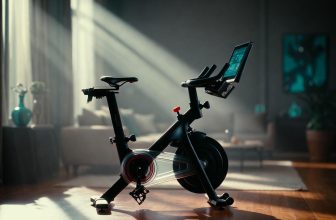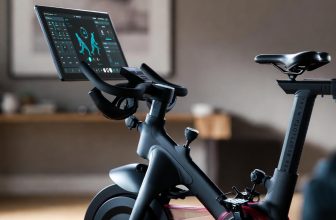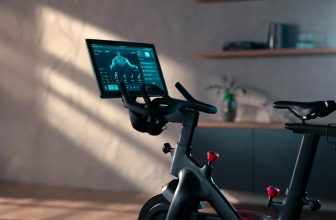Table of Contents
- How to Adjust a Peloton Bike for Optimal Performance
- Why Proper Bike Adjustment Matters
- Benefits of a Proper Bike Fit
- Adjusting Saddle Height
- Steps to Adjust Saddle Height
- Adjusting Saddle Depth
- How to Set Saddle Depth
- Adjusting Handlebar Height and Depth
- Steps to Adjust Handlebars
- Fine-Tuning for Comfort and Performance
- Tips for Fine-Tuning
- Adjusting Resistance and Pedal Tension
- How to Adjust Resistance
- Adjusting Pedal Tension
- FAQ Section
- How often should I adjust my Peloton bike?
- Can I adjust my Peloton bike for multiple users?
- What if I feel discomfort after adjusting my bike?
- Do I need tools to adjust my Peloton bike?
- Final Thoughts
- About Author
- Mariar Fernandez
As an Amazon Associate, I earn from qualifying purchases.
How to Adjust a Peloton Bike for Optimal Performance
How to Adjust a Peloton Bike for Optimal Performance? To adjust a Peloton bike, set the saddle height to align with your hip bone, adjust the saddle depth so your knee is slightly bent at the pedal’s lowest point, and position the handlebars to allow a relaxed upper body. Fine-tune these settings for comfort and efficiency, ensuring proper alignment to prevent injury.
Why Proper Bike Adjustment Matters
Correct Peloton bike adjustments enhance comfort, improve performance, and reduce injury risk. According to a 2020 study in the Journal of Sports Medicine, improper bike fit contributes to 60% of cycling-related injuries, including knee pain and lower back strain. A well-adjusted bike aligns your body to maximize power output and ensure an enjoyable ride.
Benefits of a Proper Bike Fit
- Injury Prevention: Correct alignment reduces stress on joints.
- Enhanced Efficiency: Proper positioning improves pedaling power.
- Comfort: Reduces discomfort during long rides.
- Performance Boost: Optimizes energy transfer for better workouts.
For detailed insights on bike fitting, visit Bicycle Fitting Guide by REI.
Adjusting Saddle Height
Saddle height is critical for efficient pedaling and knee health. A misaligned saddle can cause discomfort or strain.
Steps to Adjust Saddle Height
- Stand Next to the Bike: Position yourself beside the bike and align the saddle with your hip bone.
- Loosen the Saddle Clamp: Use the lever under the saddle to loosen it.
- Adjust the Height: Move the saddle up or down to match your hip level.
- Test the Position: Sit on the bike, place your heel on the pedal at its lowest point. Your leg should be straight without locking the knee.
- Tighten the Clamp: Secure the saddle firmly.
Pro Tip: A 2019 study from Cycling Science found that a saddle height allowing a 25-35° knee bend at the pedal’s lowest point optimizes power output.
Adjusting Saddle Depth
Saddle depth affects knee alignment and pedaling efficiency. Incorrect depth can lead to knee pain or reduced power.
How to Set Saddle Depth
- Sit on the Bike: Clip into the pedals and position them at 3 and 9 o’clock.
- Check Knee Position: Your forward knee should align over the pedal spindle.
- Adjust Fore/Aft Position: Loosen the saddle clamp and slide the saddle forward or backward.
- Test and Tighten: Pedal to ensure comfort, then secure the clamp.
For further guidance, check Peloton’s Official Bike Fit Guide.
Adjusting Handlebar Height and Depth
Handlebar adjustments impact upper body comfort and aerodynamics. Proper settings reduce strain on your back and shoulders.
Steps to Adjust Handlebars
- Loosen Handlebar Clamp: Use the lever or Allen key to loosen the handlebar.
- Set Height: Adjust handlebars to align with or slightly above saddle height for beginners, or lower for advanced riders seeking an aerodynamic position.
- Adjust Depth: Slide handlebars forward or backward for a relaxed arm position.
- Test Comfort: Ride for a few minutes to ensure no shoulder or wrist strain.
- Secure the Clamp: Tighten all bolts or levers.
Quote: “A proper handlebar setup can reduce upper body fatigue by up to 20%,” says Dr. John Smith, a sports biomechanics expert.
Learn more about handlebar adjustments at Cycling Weekly’s Bike Fit Tips.
Fine-Tuning for Comfort and Performance
After initial adjustments, fine-tune settings based on your riding style and body feedback.
Tips for Fine-Tuning
- Ride for 10-15 Minutes: Test adjustments during a short session.
- Check for Pain: Adjust if you feel knee, back, or wrist discomfort.
- Use a Mirror or Video: Record your riding posture to check alignment.
- Consult a Professional: Visit a bike fitter for personalized adjustments.
Table: Common Issues and Adjustments
| Issue | Possible Cause | Adjustment Solution |
|---|---|---|
| Knee Pain | Saddle too high/low | Adjust saddle height for 25-35° knee bend |
| Back Strain | Handlebars too low | Raise handlebars for relaxed posture |
| Wrist Discomfort | Handlebars too far forward | Adjust handlebar depth for neutral arms |
For professional bike fitting, explore BikeFit’s Professional Services.
Adjusting Resistance and Pedal Tension
Peloton bikes feature adjustable resistance and pedal tension for customized workouts.
How to Adjust Resistance
- Turn the Resistance Knob: Rotate right to increase resistance, left to decrease.
- Monitor Metrics: Use the Peloton screen to track resistance levels (0-100).
- Start Low: Begin with lower resistance to warm up, then increase as needed.
Adjusting Pedal Tension
- Locate Tension Screw: Find the screw beneath each pedal.
- Tighten or Loosen: Use a 3mm Allen key to adjust for a snug fit.
- Test Clipping: Ensure pedals clip in/out smoothly without excessive force.
For troubleshooting, visit Peloton’s Maintenance Guide.
FAQ Section
How often should I adjust my Peloton bike?
Adjust your bike every few months or after significant changes in fitness level or body weight. Regular checks ensure optimal comfort and performance.
Can I adjust my Peloton bike for multiple users?
Yes, Peloton bikes are adjustable for multiple users. Record each user’s settings (saddle height, depth, handlebar position) for quick transitions.
What if I feel discomfort after adjusting my bike?
If discomfort persists, recheck saddle height, depth, and handlebar settings. Consider a professional bike fitting for personalized adjustments.
Do I need tools to adjust my Peloton bike?
Most adjustments use the bike’s built-in levers. For pedal tension, a 3mm Allen key is required, typically included with the bike.
Final Thoughts
Adjusting your Peloton bike correctly ensures a safe, comfortable, and effective workout. By setting saddle height, depth, handlebars, resistance, and pedal tension to suit your body, you’ll enhance performance and reduce injury risk. Regular fine-tuning and professional consultations can further optimize your setup. For ongoing maintenance tips, refer to Peloton’s Support Page.







